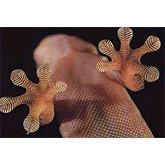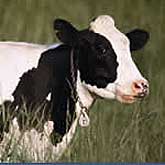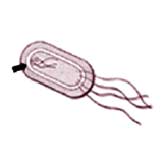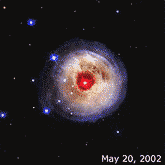Surprise! Lightning Has Big Effect On Atmospheric Chemistry
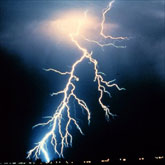 Scientists were surprised to learn summer lightning over the U.S. significantly increases regional ozone and other gases that affect air chemistry 3 to 8 miles above Earth's surface.The amounts of ozone and nitrogen oxides created by lightning surpass those generated by human activities in that level of the atmosphere. Typically over the U.S., fossil fuel burning is the main cause of nitrogen oxides (NOx), which lead to the formation of ozone near the Earth's surface. However, above the Earth's surface in the free troposphere (3-8 miles high), during the summer months, lightning activity increases NOx by as much as 90 percent and ozone by more than 30 percent.
Scientists were surprised to learn summer lightning over the U.S. significantly increases regional ozone and other gases that affect air chemistry 3 to 8 miles above Earth's surface.The amounts of ozone and nitrogen oxides created by lightning surpass those generated by human activities in that level of the atmosphere. Typically over the U.S., fossil fuel burning is the main cause of nitrogen oxides (NOx), which lead to the formation of ozone near the Earth's surface. However, above the Earth's surface in the free troposphere (3-8 miles high), during the summer months, lightning activity increases NOx by as much as 90 percent and ozone by more than 30 percent.
Depending on where ozone resides, it can protect or harm life on Earth. Most ozone resides in the stratosphere (a layer of atmosphere between 8 and 25 miles high), where it shields life on Earth from the sun's harmful ultraviolet radiation. At the surface, ozone is a harmful pollutant that causes damage to lung tissue and plants. In the troposphere (surface to 8 miles high) ozone also is a radiatively active gas that affects climate. About 77 million lightning bolts annually strike the U.S. Measurements before and after lightning strikes have confirmed the generation of nitrogen oxides in the atmosphere.
Although the largest source of NOx over the U.S. is fossil fuel burning, lightning still plays a dominant role in influencing the regional air chemistry. The explanation is NOx from fossil fuel burning is released close to the Earth's surface and is consumed rapidly by chemical reactions before being transported upward. Lightning, however, directly releases NOx throughout the entire troposphere. The lightening source over North America for NOx is sufficiently large, so that it has implications on free troposphere NOx over other parts of the world, most notably Europe, which is downwind of the U.S., given the prevailing westerly flow in the Northern Hemisphere mid-latitudes.

